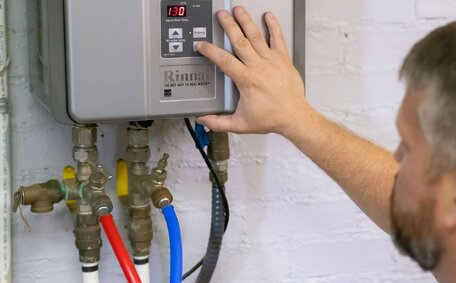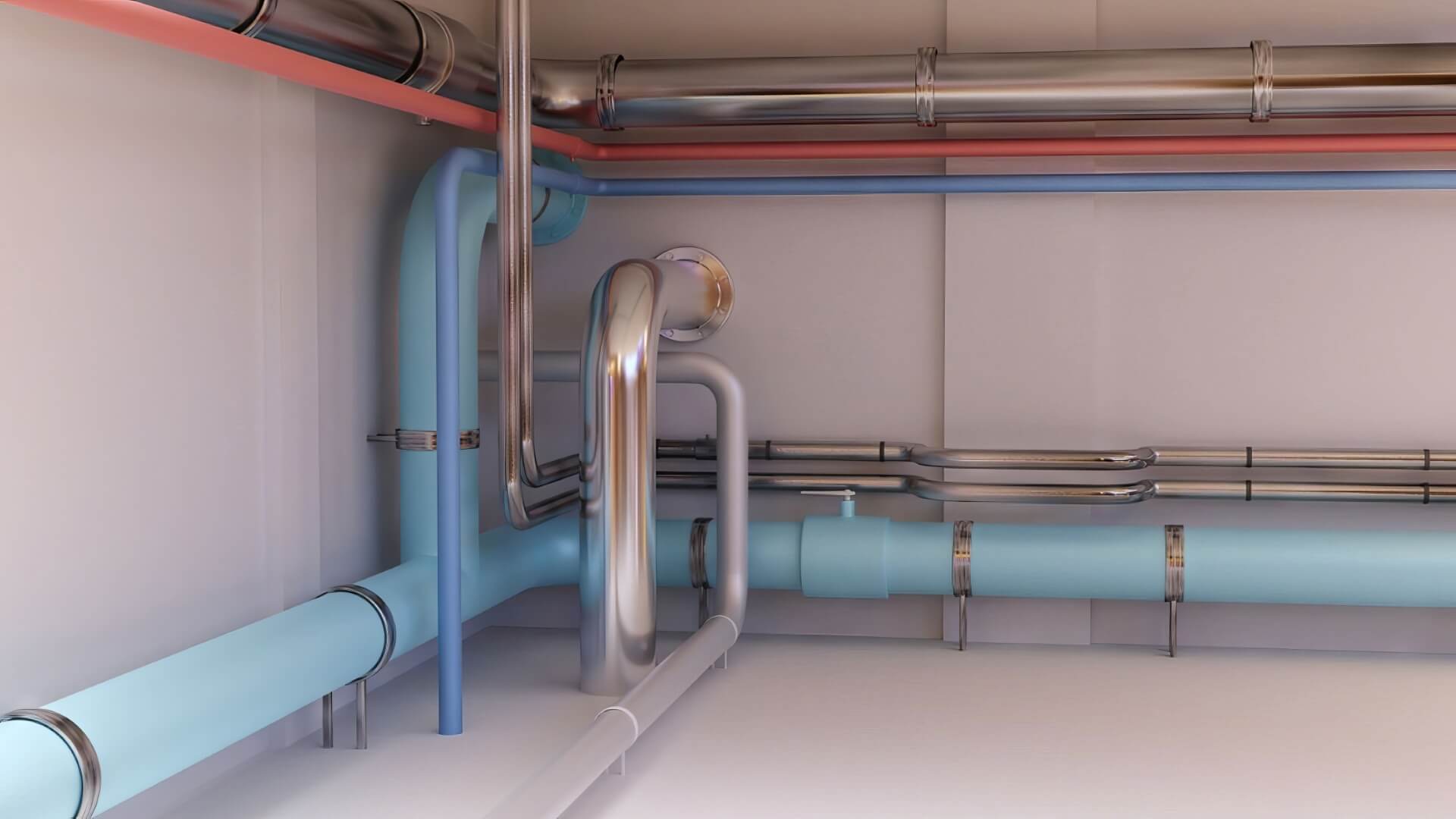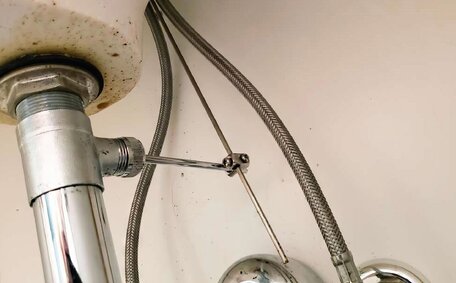How Cold Temperatures Can Affect Pipe Integrity and Materials
In cold weather, materials including PVC, copper, and cast iron may become brittle, making them prone to cracking and bursting, which compromises the integrity of plumbing systems.
Temperature changes can cause PVC and copper pipes to shrink and expand, increasing the risk of fractures. Cast iron pipes and their joins are especially vulnerable to extreme cold, risking water leaks.
Water systems face extra strain during colder months, potentially accelerating wear and tear.
Employing insulation, heat tape for exposed pipes, and temperature-regulated heaters will help keep your plumbing system safe from the damage
Risks of Freezing and Bursting Pipes in Winter Months
During the coldest months of the year, water in the pipes can pose significant risks of damage from freezing and the subsequent pressure build-up. As water can expand when frozen, the immense internal pressure can create a burst pipe scenario where pipes crack, rupture, or burst.
Extreme cold can cause PVC and copper pipes to lose their flexibility and turn brittle. Frozen water expanding inside these inflexible pipes can easily lead to bursting. The accumulation of snow and ice within pipelines can affect your property by increasing the likelihood of weather-related breaks and leaks.
Property owners should watch for signs of frozen or burst pipes over winter, including:
- Low water pressure
- Discoloured water
- Leaking water or damp areas inside walls/ceilings
- Icy surfaces around pipes
- Strange noises from the plumbing system
Contact us at the first sign of these issues to prevent further damage and minimise disruption. Our dedicated plumbers are at the ready to handle any plumbing disaster, to leave your pipes and property swiftly restored to their optimal state with minimal downtime.
Play it safe by insulating your pipework before chilling temperatures set in, effectively preventing any issues with freezing. Let us also assess your old galvanised or cast iron pipelines prone to winter cracking. Staying proactive, maintaining vigilance till spring, with regular maintenance, can help you avert the headaches and destruction of burst plumbing disasters.
Impacts on Drainage and Sewer Systems During Cold Weather
Heavy rain combined with cold temperatures can seriously disrupt drainage and sewer systems, akin to conditions seen in colder climates. As pipes contract, Greases and fats can clog them rapidly, leading to increased blockages and contributing to more frequent blocked drains. Weather can influence tree roots to thrive in the cold, aggressively infiltrating and cracking pipes.
Pouring hot water down sinks and drains can prevent the formation of semisolids. Hot water helps dissolve grease and prevent build up that can clog drains and clear minor blockages. Should you require more information on addressing serious clogs or root infiltrations, feel free to connect with your local experts - our arsenal includes high-pressure jetting and pipe relining to restore full functionality.
It’s essential to keep sewer pipes frost-free to guard against issues that could result in a catastrophic pipe burst. Insulate water supply lines, sewer lines that could freeze, and manholes to ensure optimal protection. There’s no need to worry if you monitor your property closely for signs of frozen or damaged sewer lines, such as backed-up sinks, foul smells, and soggy outdoor soil.
Our specialists are equipped to install temperature-regulated heat tape and lining pipe insulation, taking proactive measures to prevent freezing in susceptible plumbing sections. We also offer electronic sewer line thawing if you discover ice blockages. Trust our round-the-clock winter services, including our efficient pipe relining process, to steer clear of destructive pipe failures or unsanitary backups.
Challenges of Pipe Relining Projects in Cold Conditions
Frigid temperatures can pose unique difficulties for pipe relining projects. As materials like epoxy resins and fibreglass liners cure, they require ambient warmth to set properly and bond with the damaged host pipe.
Insufficient pipe lining supply in the cold can hinder the proper curing of relining materials, putting the structural integrity at risk. The finished product could end up weak or prone to detachment down the track.
To account for lower temperatures, specialists may employ supplementary heat sources to warm the application site. Using insulated sheeting and propane heaters helps maintain the essential warmth for proper setting of liners and resins. To properly cure epoxy in cooler conditions, we’ve formulated special resin blends that fully cure even within colder climates.
If practical, crews might bury pipes with ample lining supply for protection against extreme cold during the curing stage. This approach ensures the stability and quality of lining jobs, even during severe weather.
Regardless of weather conditions, our team possesses the expertise to tailor CIPP lining technology, a cutting-edge method, to the challenges posed by harsh winter environments. We understand which materials, site preparations and curing measures best suit frigid environments to deliver seamless, long-lasting repairs immune to seasonal changes.
Preventing Frozen Pipes With Insulation and Climate-Specific Solutions
Proper insulation is crucial to protect your plumbing from cold weather damage. For added security, we recommend encasing exposed pipes with insulating foam sleeves or heat tape.
As a backup plan, insulating pipes in unheated zones like attics and crawl spaces with materials sporting an R-value of 30+ is your best bet for excellent protection.
Considering how location affects pipe protection, trace heating systems offer reliable freeze prevention, especially in areas prone to freezing unlike the warm Gold Coast. These advanced plumbing electrical systems employ thermostat-controlled heat cables that wrap around pipes, activating automatically as temperatures plunge. They are more expensive to install but provide 24/7 safeguards that turn on before pipes ever reach dangerous freezing points.
For brutal climates, heat trace bundles are the gold standard, combining both insulation and heating elements for maximum protection. The resilience of PEX and CPVC piping, which withstand summer heat and winter cold better than copper or PVC, makes them more suitable for climates with extreme temperature fluctuations.
No matter your climate challenges, our team can do thorough assessments to identify vulnerable areas and tailor robust insulation, heating, and pipework solutions to your specific conditions. Rest assured, we are here to help and leverage our winterisation expertise to keep your pipes safe throughout the season.
Managing Hot Water Systems Vulnerable to Cold
Your hot water system may strain harder to maintain temperatures in colder weather, affecting efficiency. This can lead to higher utility bills as systems run overtime trying to keep pace with demand.
Several preventive strategies can protect systems vulnerable to harsh winter conditions:
- Insulate pipes and water heaters. Wrapping pipes and tanks in your home prevents heat loss so your system doesn’t have to work as hard.
- Use heat trace cables designed for temperature regulation, wrapping them around pipes to maintain consistent warmth and prevent freezing.
- Have a plumber perform seasonal maintenance. Tasks like flushing sediment, replacing worn parts, and checking functionality help ensure your system operates efficiently despite the cold.
- An option would be to consider a tankless water heater upgrade, especially if your current model is outdated. Tankless heaters provide endless hot water on demand, saving energy and lowering bills.
Extreme cold can cause significant plumbing problems, particularly straining older hot water units. If you experience a loss of hot water in winter months, contact your trusted plumbing professionals right away - we likely need to replace failing parts or upgrade inadequate equipment.
Rely on our winter plumbing expertise to keep your hot water flowing all season long. We are knowledgeable about the preventative measures that mitigate cold weather effects on systems in colder climates.
Innovations in UV-Cured Pipe Lining for All-Weather Use
Recent innovations show that pipe relining can offer all-weather solutions to protect infrastructure. UV-cured lining materials are one exciting development changing the game for cold weather installations.
UV-cured linings, unlike traditional epoxy resins, don’t rely on warmer temperatures, using ultraviolet light to initiate curing. This approach sidesteps potential plumbing problems by allowing liners to fully cure even in frigid conditions down to -20°C.
UV lining systems use inflatable sleeves with liquid resin that quickly hardens when exposed to intense UV light. The flexible curing equipment can be readily transported to the project site, allowing crews to work on relined pipes despite freezing temperatures.
UV pipe lining resolves weather-related curing issues, offering year-round opportunities for essential plumbing repairs. UV lining’s seamless installation minimises property disruption, even during the winter.
As leading experts in pipe renewal solutions, Glenwood Plumbing stays ahead of the latest industry innovations. Our team is prepared to utilise UV-cured lining technology for your winter pipe relining needs, ensuring durable and reliable results that withstand cold weather.
Protect against the risks of burst pipes and quality issues due to cold temperatures. Call 1300 349 338 or email us to schedule an appointment with our UV lining specialists today.






